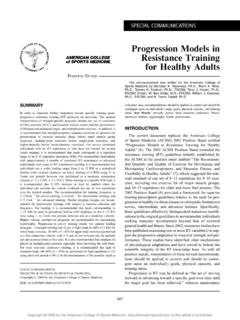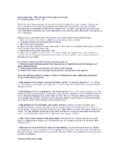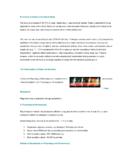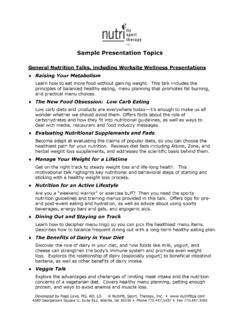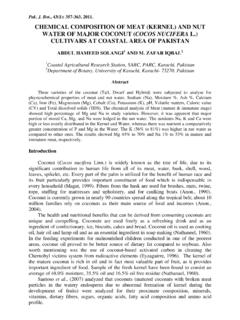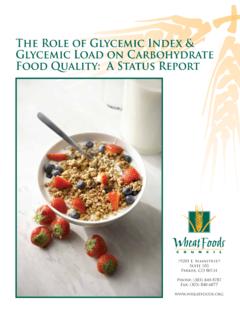Transcription of Carbohydrates and fat for training and recovery
1 Carbohydrates and fat for training and recoveryLOUISE M. BURKE,1*BENTE KIENS2and JOHN L. IVY31 Department of Sports Nutrition, Australian Institute of Sport, PO Box 176, Belconnen, ACT 2616,Australia,2 Department of Human Physiology, Copenhagen Muscle Research Centre, Institute of Exercise and SportsSciences, University of Copenhagen, DK-2100, Copenhagen , Denmark and3 Department of Kinesiology and HealthEducation, University of Texas, Austin, TX 78747, USAA ccepted 7 August 2003An important goal of the athlete s everyday diet is to provide the muscle with substrates to fuel the trainingprogramme that will achieve optimal adaptation for performance enhancements.
2 In reviewing the scientificliterature on post-exercise glycogen storage since 1991, the following guidelines for the training diet are should aim to achieve carbohydrate intakes to meet the fuel requirements of their training programme andto optimize restoration of muscle glycogen stores between workouts. General recommendations can be provided,preferably in terms of grams of carbohydrate per kilogram of the athlete s body mass, but should be fine-tuned withindividual consideration of total energy needs, specific training needs and feedback from training performance.
3 Itis valuable to choose nutrient-rich carbohydrate foods and to add other foods to recovery meals and snacks toprovide a good source of protein and other nutrients. These nutrients may assist in other recovery processes and, inthe case of protein, may promote additional glycogen recovery when carbohydrate intake is suboptimal or whenfrequent snacking is not possible. When the period between exercise sessions is58 h, the athlete should begincarbohydrate intake as soon as practical after the first workout to maximize the effective recovery time betweensessions.
4 There may be some advantages in meeting carbohydrate intake targets as a series of snacks during theearly recovery phase, but during longer recovery periods (24 h) the athlete should organize the pattern and timingof carbohydrate -rich meals and snacks according to what is practical and comfortable for their individual foods with a moderate to high glycaemic index provide a readily available source ofcarbohydrate for muscle glycogen synthesis, and should be the major carbohydrate choices in recovery there is new interest in the recovery of intramuscular triglyceride stores between training sessions.
5 Thereis no evidence that diets which are high in fat and restricted in carbohydrate enhance : carbohydrate , energy intake, glycaemic index, glycogen, important goal of the athlete s everyday diet is toprovide the muscle with substrates to fuel the trainingprogramme that will achieve optimal adaptation andperformance enhancements. Body fat and carbohydratestores provide the major sources of exercise fuel; whereasfat sources (plasma free fatty acids derived from adiposetissue and intramuscular triglycerides) are relativelyplentiful, carbohydrate sources (plasma glucose derivedfrom the liver or dietary carbohydrate intake, and muscleglycogen stores) are limited (for a review, see Coyle,1995).
6 In fact, the availability of carbohydrate as asubstrate for the muscle and central nervous systembecomes a limiting factor in the performance ofprolonged sessions (490 min) of submaximal or inter-mittent high-intensity exercise, and plays a permissiverole in the performance of brief high-intensity work. As aresult, sports nutrition guidelines have focused onstrategies to enhance body carbohydrate practices include intake of carbohydrate before andduring a workout to provide fuel for that session, as wellas intake of carbohydrate after the session and over theday in general to promote refuelling and recovery (for areview, see Hargreaves, 1999).
7 Although other reviews in this issue will discussstrategies for promoting carbohydrate availability before(Hargreaveset al., 2004) and during exercise (Coyle,2004) in relation to the enhancement of competitionperformance, these practices should also be integratedinto the athlete s training diet. The focus of this article,however, is successful refuelling from day to day, torecover between the daily sessions or multiple workouts*Author to whom all correspondence should be : of Sports Sciences, 2004,22, 15 30 Journal of Sports SciencesISSN 0264-0414 print/ISSN 1466-447X online#2004 Taylor & Francis LtdDOI: in the athlete s training programme.
8 Stra-tegies to achieve these goals will be particularlyimportant for the serious athlete whose fuel require-ments for everyday training are likely to challenge orexceed normal body carbohydrate stores. Key issuesrelated to carbohydrate intake for training and recoveryraised in the 1991 position stand on nutrition for sport(Devlin and Williams, 1991) are summarized in Table1. The aim of this article is to review areas in whichthese guidelines have been changed or on post-exercise glycogen recoveryThe application of the biopsy technique to the study ofexercise metabolism in the 1960s allowed sportsscientists to measure directly the glycogen content ofisolated muscle samples, and thus determine the factorsthat enhance or impair storage of this important 1991.
9 Techniques involving nuclear magneticresonance spectroscopy have also become available toprovide a non-invasive estimate of muscle glycogencontent (Roden and Shulman, 1999), and haveincreased the practical opportunities to study new dimension to the literature on glycogensynthesis and utilization is the discussion of thepresence of two glycogen pools within muscle, progly-cogen and macroglycogen (Adamo and Graham, 1998).Initially, these were thought to be separate andmetabolically distinct compounds (Shearer and Gra-ham, 2002), but the current understanding is that theyprobably represent the extremes of a spectrum ofglycogen molecules of different size.
10 Studies haveisolated a primer for glycogen synthesis, the proteinglycogenin, which acts both as the core of the glycogenmolecule and the enzyme stimulating self-glycosylation(Alonsoet al., 1995). The initial accumulation ofglucose units to glycogenin forms proglycogen, whichis of relatively smaller size. Proglycogen storage is mostprominent during the first phase of recovery and issensitive to the provision of dietary carbohydrate (Adamoet al., 1998). During the second phase ofglycogen recovery , glycogen storage occurs mainly inthe pool of macroglycogen: a glycogen molecule withgreater amounts of glucose relative to the glycogenincore.

